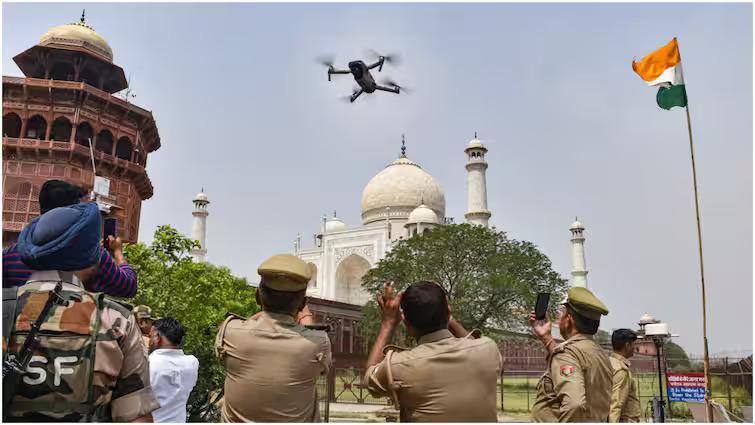
What is Anti-Drone System Which is Protecting the Taj Mahal?
Amidst the increasing concern for security measures across India, the Taj Mahal, a UNESCO World Heritage Site, has recently been equipped with an anti-drone system to protect it from potential threats. The system, also known as a Counter-UAS (Unmanned Aircraft System) or C-UAS, is a set of technologies and strategies designed to detect, track, and neutralize or mitigate the threat posed by unauthorized or hostile drones.
The installation of the anti-drone system at the Taj Mahal is a significant step towards ensuring the safety and security of this iconic monument. As the drone menace has been on the rise globally, it is essential for authorities to take proactive measures to prevent unauthorized aerial activities around sensitive areas like the Taj Mahal.
What is an Anti-Drone System?
An anti-drone system is a comprehensive solution that involves a combination of technologies and strategies to detect, track, and neutralize or mitigate the threat posed by unauthorized or hostile drones. The system typically includes a range of components, such as:
- Detection Systems: These systems use sensors and radars to detect and track drones in real-time. They can detect drones at a range of up to several kilometers and can distinguish between friendly and hostile drones.
- Tracking Systems: Once a drone is detected, the tracking system takes over to monitor its movement and trajectory. This enables authorities to respond quickly and effectively to any potential threats.
- Neutralization Systems: The neutralization system is designed to bring down or disable the drone, preventing it from causing harm. This can be achieved through a range of methods, including jamming the drone’s signal, disrupting its navigation system, or using physical barriers to block its path.
- Command and Control Center: The command and control center is the nerve center of the anti-drone system. It receives data from the detection and tracking systems, analyzes it, and provides real-time feedback to the response team.
How Does the Anti-Drone System Work?
The anti-drone system installed at the Taj Mahal works by detecting and tracking drones in real-time. Once a drone is detected, the system provides real-time feedback to the response team, which includes:
- Drone Detection: The system detects the drone using sensors and radars, and alerts the response team of its presence.
- Drone Tracking: The system tracks the drone’s movement and trajectory, enabling authorities to respond quickly and effectively to any potential threats.
- Neutralization: The system neutralizes the drone by bringing it down or disabling it, preventing it from causing harm.
Benefits of Anti-Drone Systems
The installation of anti-drone systems at sensitive areas like the Taj Mahal offers several benefits, including:
- Enhanced Security: Anti-drone systems provide an additional layer of security, enabling authorities to respond quickly and effectively to potential threats.
- Protection of Assets: The system ensures the protection of assets and infrastructure, preventing damage or disruption.
- Improved Public Safety: By preventing unauthorized aerial activities, anti-drone systems help to ensure public safety and prevent potential threats.
- Cost-Effective: Anti-drone systems are a cost-effective solution compared to traditional methods of security, such as deploying personnel or equipment.
Conclusion
The installation of an anti-drone system at the Taj Mahal is a significant step towards enhancing the security and protection of this iconic monument. The system provides a comprehensive solution to detect, track, and neutralize or mitigate the threat posed by unauthorized or hostile drones. As the drone menace continues to pose a threat globally, it is essential for authorities to take proactive measures to prevent unauthorized aerial activities around sensitive areas.
Source:
https://thecsrjournal.in/what-anti-drone-system-deployed-protect-taj-mahal/






